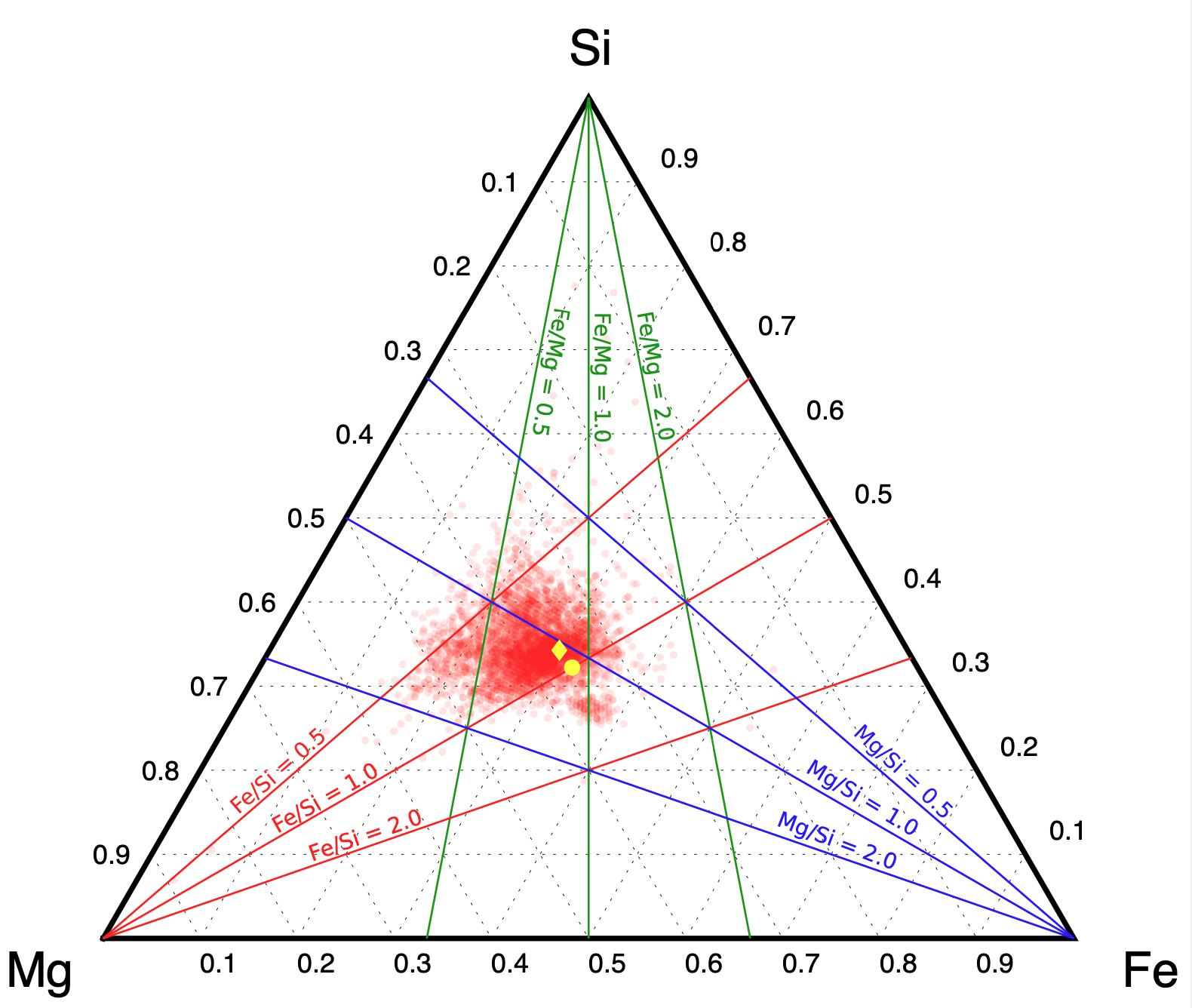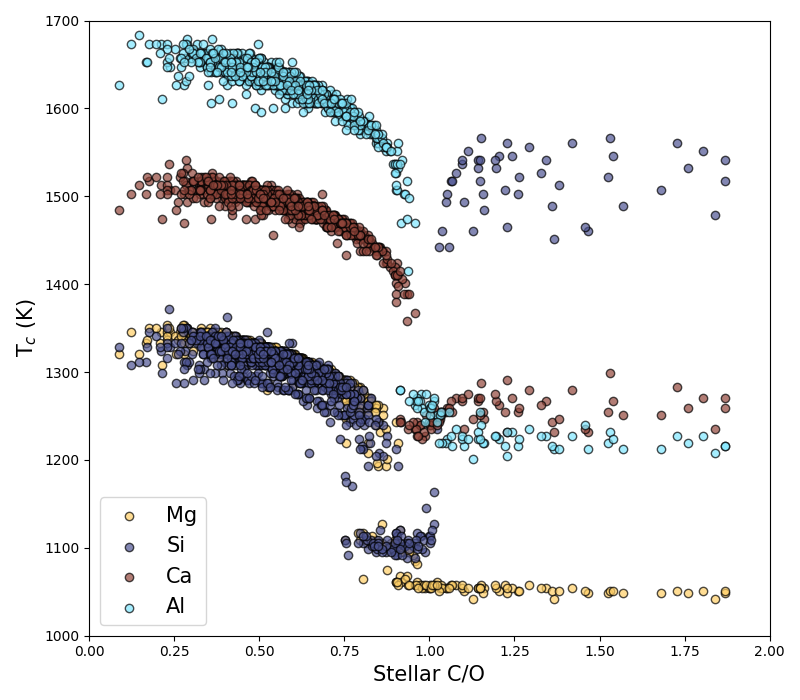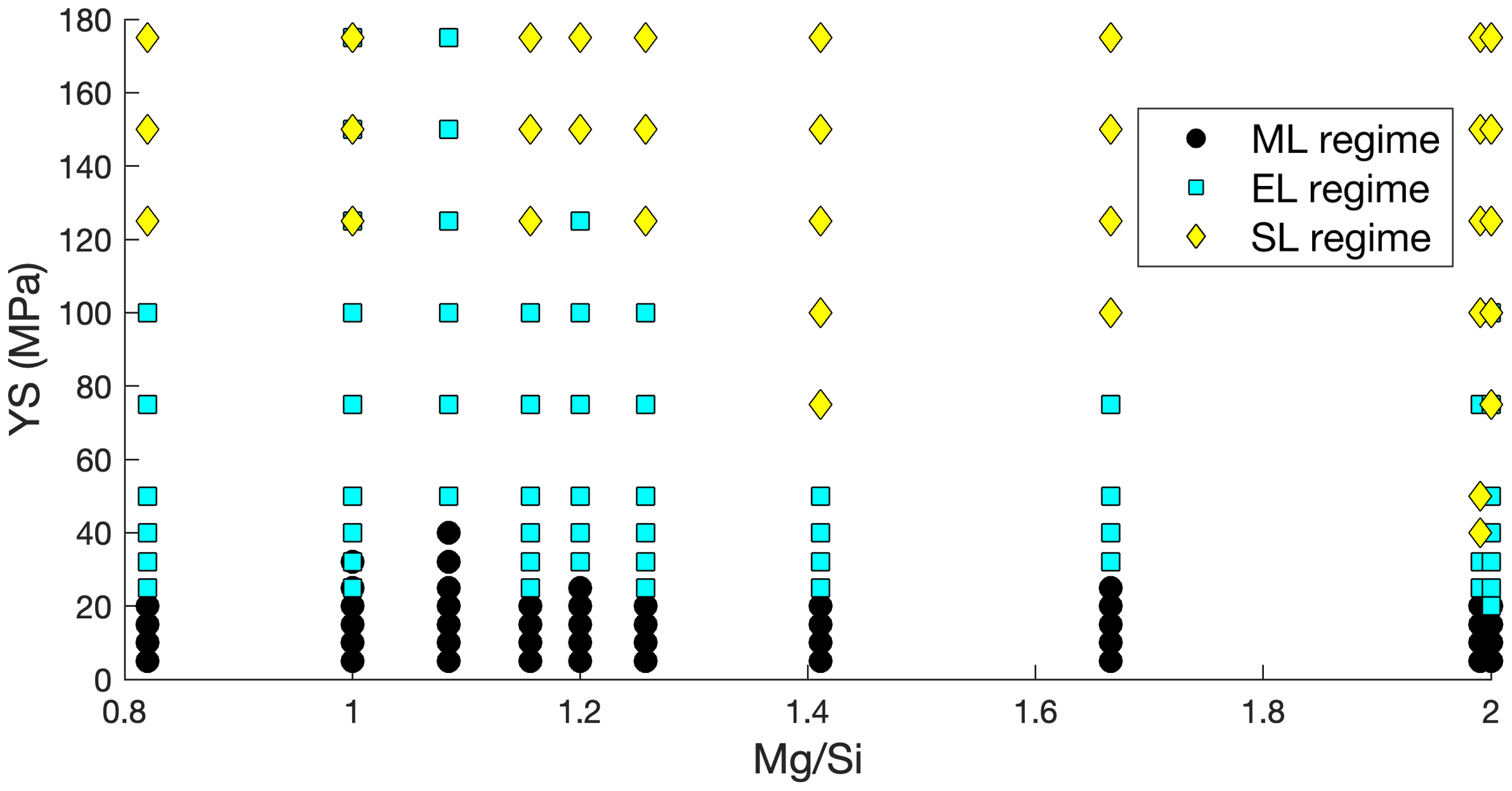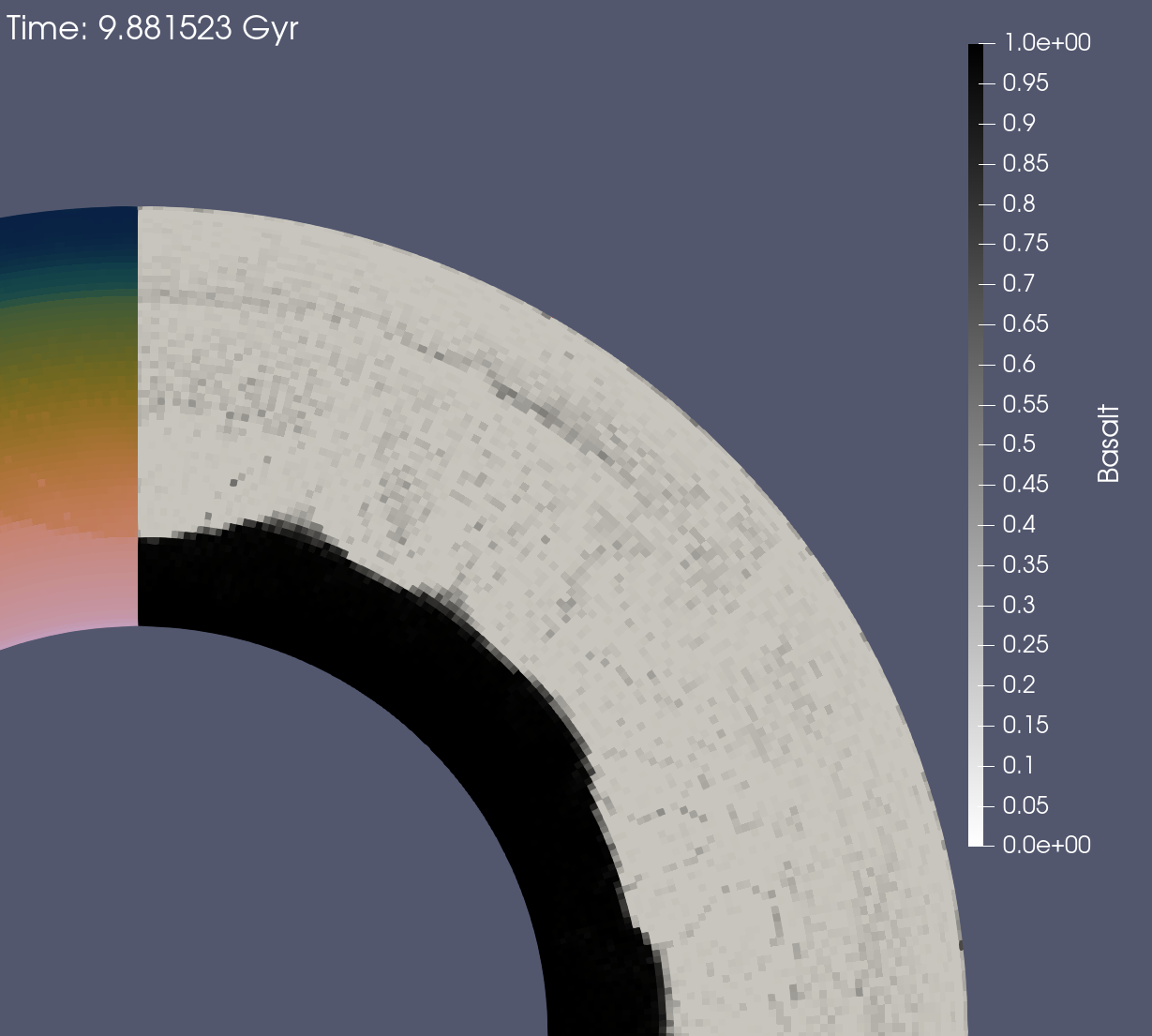About
I am a computational Planetary Scientist interested in the evolution and habitability of rocky planets. My research involves a variety of modeling frameworks simulating the formation, material properties, and long-term evolution of rocky planets. I combine these models to answer two fundamental questions:
What is the full range of chemical compositions of rocky exoplanets?
How does the bulk composition of a rocky planet influence its long-term evolution and habitability?
These questions span multiple disciplines, and I greatly enjoy learning from these diverse scientific fields, bringing together different aspects to reveal the full picture of planet formation and evolution. I collaborate with scientists worldwide to advance our understanding of rocky planets, preparing for the wealth of current and upcoming exoplanet observations.
In addition to my research, I co-host a monthly online discussion series, Rocky Worlds Discussions, which brings together the international planetary science community to share insights and foster collaboration.
Experience
SNSF postdoctoral Fellow in Planetary Science: 01.2024 - present
Forming Worlds Lab, Kapteyn Astronomical Institute, Groningen, NL
Volcanism and atmospheric evolution on rocky exoplanets: Investigating potentially observable trends
PhD Researcher in Geophysics: 03.2019 - 10.2023
Geophysical Fluid Dynamics, ETH Zurich, Zurich, CH
PhD dissertation: Geodynamical evolution of terrestrial exoplanets: Effects of bulk interior major element chemistry
MSc. in Geophysics: 09.2016 - 11.2018
Department of Earth Sciences, ETH Zurich, Zurich, CH
MSc Thesis: The controls of planetary bulk composition and tectonic style on the long-term evolution of the coupled atmosphere-interior system
BSc. in Earth Sciences: 09.2012 - 07.2016
BSc. in Physics: 09.2013 - 07.2016
BSc. in Mathematics: 09.2012 - 07.2016
Faculty of Science, VU, Amsterdam, NL
BSc thesis Mathematics: Statistics of extreme sea levels
BSc thesis Physics+Earth Sciences: An experimental approach to study the interior of carbon-rich rocky exoplanets
List of publications
In Preparation
- Spaargaren, R.J., Herbort, O., Wang, H.S., Mojzsis, S.J., Sossi, P. A statistical approach to the dependence of condensate composition on host star composition for rocky planet formation
- Spaargaren, R.J., Ballmer, M.D., Tackley, P.J. Exogeodynamics: Modelling the thermal and dynamical evolution of rocky planets considering bulk planet compositions
Accepted
- [4] Spaargaren, R.J., Wang, H.S., Mojzsis, S.J., Ballmer, M.D., Tackley, P.J. (2023) Plausible Constraints on the Range of Bulk Terrestrial Exoplanet Compositions in the Solar Neighborhood, the Astrophysical Journal, 948, 53. https://doi.org/10.3847/1538-4357/acac7d
- [3] Jorge, D.M., Kamp, I.E.E., Waters, L.B.F.M., Woitke, P., Spaargaren, R.J. (2021) Forming Planets Around Stars With Non-Solar Elemental Composition, Astronomy and Astrophysics, Vol. 660, A85. https://doi.org/10.1051/0004-6361/202142738
- [2] Spaargaren, R.J., Ballmer, M.D., Bower, D.J., Dorn, C., Tackley, P.J. (2020) The influence of bulk composition on the long-term interior-atmosphere evolution of terrestrial exoplanets, Astronomy and Astrophysics, Vol. 643, A44. https://doi.org/10.1051/0004-6361/202037632
- [1] Hakim, K., Spaargaren, R.J., Grewal, D.S., Rohrbach, A., Berndt, J., Dominik, C., van Westrenen, W. (2019) Mineralogy, Structure, and Habitability of Carbon-Enriched Rocky Exoplanets: A Laboratory Approach, Astrobiology, Vol. 19, No. 7. https://doi.org/10.1089/ast.2018.1930
Research: chemical compositions of rocky exoplanets
It is not possible to directly observe the composition of a rocky planet. However, there are other ways to unveil their chemical make-up, and study the chemical diversity of rocky exoplanets. To this end, I make use of the fundamental chemical link between a rocky planet and its host star, which originates in their formation process: when a star forms from a collapsing molecular cloud, a small part of that cloud gathers in a proto-planetary disk orbiting the proto-star, which has a composition identical to that of the host star. In this disk, solid material condenses, forming dust, pebbles, and planetesimals. Rocky planets form from this condensed material, creating a fundamental compositional connection to the host star. By making use of this fundamental connection, and readily available stellar abundance measurements, my collaborators and I unveil the rich and diverse worlds that exist in this Universe.
Chemical composition of rocky exoplanets

The chemical composition of stars is readily available for most stellar types. Large databases with compositions for many stars are available online, such as the Hypatia catalog and the GALAH survey. These stellar compositions inform us about rocky exoplanet compositions. However, first we must consider the planet formation process. Smaller rocky planets, such as Earth, primarily form from material that can condense in the Proto-Planetary disk. These planets are therefore depleted in volatile elements. Comparing the elemental compositions of the Earth and the Sun as a function of element condensation temperature shows such a devolatilization trend. To simulate the planet formation process, we apply depletion factors to all elements, based on the Earth-Sun devolatilization trend from Wang et al. (2019). Thus, we arrive at a representative set of rocky exoplanet compositions.
Read more details in our 2023 paper
Condensation sequences

The devolatilization trend will not be exactly the same for all planets. Namely, the element condensation temperatures depend on the composition of the protoplanetary disk. Elements may move up or down the devolatilization trend based on their condensation temperature, and an element that is refractory in the Solar nebula, such as Mg, may be much more volatile in another protoplanetary disk. Therefore, we simulate condensation sequences of other stars, which calculate the order in which condensates appear as a parcel of gas cools down. We use the condensation sequence model GGchem to simulate a large number of sequences, and calculate element condensation temperatures for each case. We have already investigated the condensation sequences for a small range of stars, focusing on different sulphur content, published as Jorge et al. (2022). A paper describing condensation for a larger sample of stellar abundances is in the works!
More coming soon!
Graphite planets
In Protoplanetary disks with high carbon abundances, the condensation sequence looks fundamentally different. Specifically, most oxygen is captured by carbon to form the gas CO, leaving little oxygen to form silicates. Instead, condensates shift to carbides (e.g., SiC, TiC) or sulfides (e.g., CaS, MgS), making for rocky planets with fundamentally different chemical make-up. In these systems, a significant amount of carbon can condense and accrete on a planet in the form of graphite. In my bachelor's thesis, published as Hakim et al. (2019), we found that most graphite stays apart, and likely forms a crust on top of the rocky mantle due to the low density of graphite. I am highly interested in both the occurrence rate and long-term evolution of these planets, and will likely pursue these planets in future research.
Stay tuned!
Research: Long-term evolution of rocky exoplanets
Earth is the only habitable planet that we currently know of. The temperate surface conditions of our planets are for a large part thanks to many feedback mechanisms, some of which involve interaction between the surface and the interior. Gases like water and CO2 are constantly transported from the mantle to the surface through volcanism, and back into the mantle through subduction. This relatively free exchange requires the planet to be in a surface dynamic regime resembling the plate tectonics regime we find on Earth. There are many factors that go into whether a rocky planet is in such a mobile lid regime, such as planet size, core size, surface temperature, mantle viscosity, and many more. Since the bulk composition of a planet moderates both core size and mantle mineralogy, and thus many different mantle material properties, it may also play an important role in determining a planets surface dynamic regime. At the very least, it is another parameter to consider. I study how bulk rocky planet composition affects mantle mineralogy and material properties, and how this affects the long-term evolution of these planets.
Mantle dynamics

To study mantle dynamics on multi-billion-year timescales, I use a geodynamical model, StagYY (Tackley, 2008), which simulates mantle convection and dynamical evolution of the interior. To simulate the evolution of rocky planets with varying bulk composition, I compute mantle mineralogy with Perple_X (Connolly, 2005), and I also use it to calculate lookup tables of physical properties (such as density) as a function of pressure and temperature. The StagYY simulations show how the surface dynamics regime, characterized by an Earth-like Mobile Lid regime, a Mars-like Stagnant Lid regime, or an intermediate Episodic Lid regime, depends on composition.
More coming soon!
The fate of subducted crust

On Earth, some studies associate seismic features at the bottom of the mantle with subducted crustal material that accumulated there in piles (LLSVPs). Crust material is denser than ambient mantle material almost everywhere throughout the mantle, and can accumulate at the mantle bottom, but on Earth this only happens to a limited extent, if at all. On Exoplanets with denser crust, it is much more likely that crustal material accumulates at the bottom of the mantle, and remains there on long timescales. This will have enormous consequences for the long-term evolution, both of the interior and the atmosphere. This layer will contain most of the planets heat-producing elements, leaving a colder upper mantle, and most material that melts at low temperatures, increasing the upper mantle melting temperature and restricting volcanism even further. More research is needed on how crust composition and density depends on bulk interior composition, but it is clearly a vital parameter to take into account when studying rocky exoplanets.
Stay tuned!
Awards and grants
Grant: SNSF Postdoc.Mobility
106.000 euro Fellowship Grant
Postdoc.Mobility grant awarded by the
Award: Outstanding Student Presentation Award
European Geosciences Union
Awarded by the
Award: ETH Zurich medal for best MSc research thesis
Swiss Federal Institute of Technology medal
Awarded for the best MSc research thesis of the Department of Earth Sciences,
Grant: Hendrik Muller Studiebeurs
4.000 euro scholarship
Scholarship awarded as contribution to a 2-year MSc degree in Geophysics at ETH Zurich, awarded by Hendrik Muller Vaderlandsch Fonds
Get In Touch
I am always open for new collaborations! You will find me in room 189 of the Kapteyn Astronomical Institute in Groningen, the Netherlands. And you can always reach me at spaargaren@astro.rug.nl